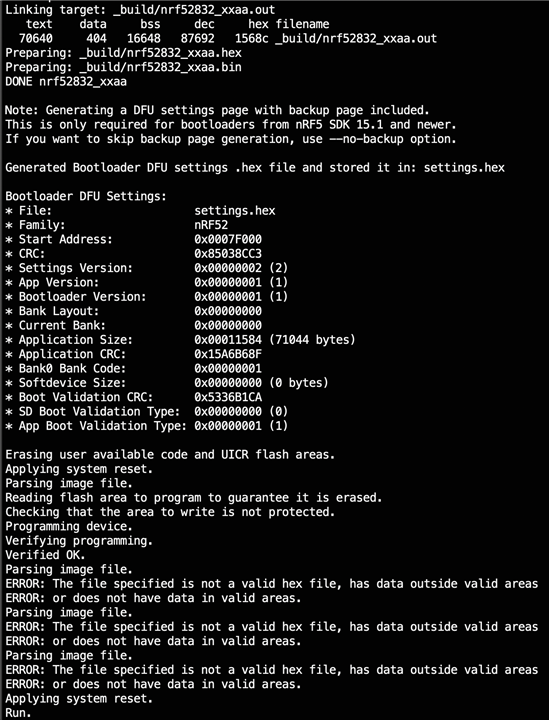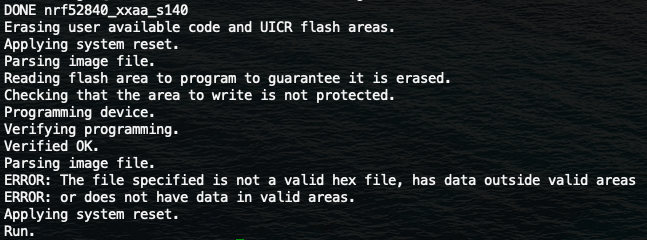I am using an nRF52840 DK board that I just bought, but have ran into a weird issue that I have never come across when using our old nRF52840 DK. I have a script that I use to first compile my project code, and then flash everything onto my DK board. Here is the code of that script:
My code compiles and the hex files are generated as a result of the calls to make -C "$boot_make" and make -C "$app_make". However, when the script finishes programming the softdevice, it complains with ERRORS about the other .hex files I am trying to flash. Here is that output for your reference:

Only moments ago, when running the same code for an older DK (same nRF52840), this script worked fine and everything flashed correctly. I cant figure out why this new DK board causes the programming to fail. What might be causing this new behavior (even though there is no code change)?
I have also attached the log output file from logging the first failing nrfjprog --program command for your reference....if it helps.
The only other thing I have tried is to erase my device from Segger ES (Target > Connect JLink, Target > Erase All), download the secure bootloader ble example, then download my custom application. When I Build and Debug this code, my project always fails at this function, with the same error (NRF ERROR NO MEM "No bootloader found"):





